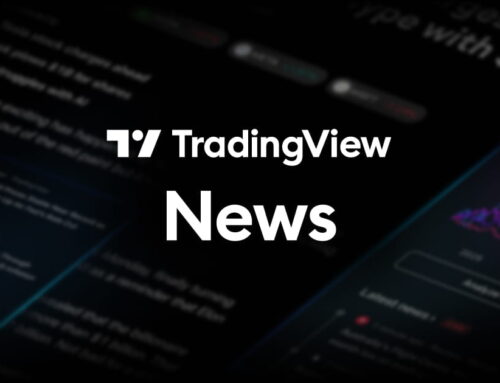South African power cuts help boost solar panel supplier
June 4, 2025

The chief executive of Herholdt’s Group, a South African solar equipment supplier ranked 25th in this year’s FT-Statista rankings of Africa’ fastest growing companies, can pinpoint the moment when the company’s fortunes were transformed.
Heine Herholdt had been sent to the sparsely populated Northern Cape to set up a branch of the family business in Kimberley, the provincial capital. The company, co-founded in 1964 by Herholdt’s father Bernhard, then a young electrician, had developed steadily as a wholesaler of standard electrical equipment, including light switches, electric cable, lamps, plugs, switches and sockets.
It was doing decent business, but nothing earth-shattering. “It was quite funny,” says the youngest of five children, talking about an incident in 2016 that was to set the business on a new trajectory. “I had a customer buying electrical goods and he pulled up with a bunch of solar panels on the back of his vehicle. I said, ‘What’s that?’ And he said they were solar panels and that he was buying them from a company in Port Elizabeth.”
Herholdt thought that, if a competitor in Port Elizabeth could supply renewable energy equipment, then so could he. He began to source solar panels locally. But as demand began to rise and, as volumes swelled, it made more sense to source abroad, mainly from China, he says.

Over the years, Herholdt has been a regular visitor to manufacturers of solar equipment in Shanghai, Shenzhen and Ningbo, which dominate the renewable energy sector. Major suppliers to Herholdt include Sigenergy, Sungrow and JA Solar.
Throughout, the company has stuck doggedly to its B2B model, supplying installers, distributors and wholesalers of solar equipment.
Herholdt’s accidental encounter in the Northern Cape could hardly have been better timed. After years of neglect, under-investment and corruption, Eskom, South Africa’s power monopoly, was on the brink of collapse. Load shedding, as South Africans call power outages, had been going on intermittently since 2007 as ageing coal-fired power stations struggled to supply enough electricity to the creaking grid.
But in the years after Herholdt’s moved into solar, the power outages became a national crisis. Rolling blackouts of up to 12 hours a day hit large parts of the country.
Without electricity, factories ground to a halt, meat rotted in abattoirs and gangs went on crime sprees under the cover of darkness, sometimes stealing copper cable from electricity supply lines, further exacerbating an already desperate crisis. Unless they had a generator, households were frequently plunged into darkness, with everything from home appliances to the internet abruptly shutting off.
Demand for Herholdt’s solar equipment soared. Each new load shedding crisis brought a fresh batch of orders. Between 2018 and 2021, revenues ballooned from $34mn to $101mn, according to figures submitted for the FT-Statista 2023 ranking when Herholdt’s came 36th. The latest rankings show sales rose to $461mn in 2023 — a compound annual growth rate of almost 104 per cent over three years.
The group’s expansion has been helped by Adenia Partners, a Mauritius-based private equity firm specialising in Africa, which bought a 78 per cent stake in Herholdt’s in June 2021. Stéphane Bacquaert, Adenia’s managing partner, says its investment followed a tussle between the generations over which direction Herholdt’s should take with Adenia backing the vision of the younger generation.

Herholdt denies that there was any great family quarrel over his conviction solar was the future. “I’m the youngest and my whole family came from the electrical side,” he says. “It’s just that I started this whole thing with solar and I really liked the way it was going.”
Adenia provided capital for expansion and expertise, placing two of its partners on Herholdt’s board. “Going from a small family-run business to multibillion rand business is something I would never have expected could happen so quickly,” says Herholdt.
The company has ridden the solar boom, though things have not always been straightforward. Herholdt’s does not qualify as a Black-empowered business, excluding it from lucrative government contracts. South Africa’s ports are notoriously inefficient, delaying imports from China. Nor has demand been easy to predict, rising when power cuts are at their worst and then falling back again.
In the past year or so, a period that falls outside the timeframe of these FT rankings, power cuts have reduced dramatically as the government has finally got a handle on Eskom. Adding to challenges, a glut of solar panel equipment in China has pushed factory prices down by at least half as manufacturers seek to offload inventory.
As prices have fallen so have Herholdt’s already slim margins, he adds. Still, Adenia remains committed to the renewable energy sector. In October 2023, the fund bought a majority stake in Enfin Energy Finance, a solar finance company, also in South Africa. “This whole value chain is exploding across Africa and we see more and more opportunities in that space,” says Bacquaert.
Adenia, he adds, remains agnostic about the type of renewables business to invest in. “It can be a maintenance company to a distributor of solar panels to basically almost any energy utility based on solar,” he says. “You have plenty of business models in that space; it’s a very strong sector.”
Search
RECENT PRESS RELEASES
Related Post


